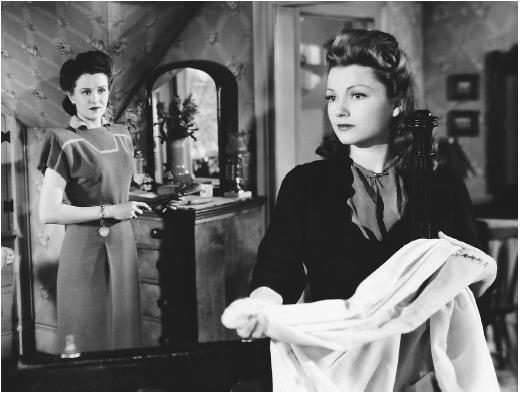Written by Hunt Stromberg
Directed by John Brahm
USA, 1944
The family unit is, or should be, the strongest in one’s life, the one from which a solid emotional backbone is based from, the unshakable bond that brings its members together through thick and thin. For that reason, a troubled familial relationship, any sort of considerable rift between two or more of the members, may be the worst variety of schism afflicting previously close loved ones. Said troubles may not necessarily originate from within the unit, but from outside, such as when a new member is admitted through marriage. John Brahm’s 1944 melodrama noir Guest in the House concerns itself with this very matter (minus marriage), demonstrating the terrible deconstruction of a previously tightly knit family tearing apart at the seams.
The Proctors await the return of one of their own, Dr. Dan Proctor (Scott McKay), having gone away for considerable time on duty. Accompanying him in his return trip back to home is his new lover Evelyn Heath (Anne Baxter), a beautiful if very emotionally fragile women whose past hardships have taken their toll, hence the occasional fits of hysteria and curious phobia of birds. The family, in particular big brother Douglas (Ralph Bellamy) and his wife Ann (Ruth Warrick), wave aside any such concerns and gladly welcome her into their domain. Anne’s pretenses of trauma are no more than charades in her ever-evolving quest to manipulate those around her to satisfy her needs, be they lustful or monetary. This duplicitous she-devil is about to work her black magic on the unsuspecting Proctors once she sets her eyes on the handsome Douglas, playing one member against the other.
John Brahm’s Guest in the House is a slippery film to assess when weighing all its aspects equally. By all accounts, it may be considered as one of the more grounded noirs around, with nary a hoodlum or pistol in sight. The story transpires from within the confines of the Proctor house, playing out like a melodrama with lofty psychological aspirations. Conversely, Brahm and his team depict the action in such a way that Guest in the House ends up being quite the little genre entry, from the chiaroscuro cinematography, handled by Lee Garmes, to Anne Baxter’s lead performance, which far exceeds what most viewers would reckon is believable acting a regular drama. In that respect, Guest in the House straddles that fine line between a film to be taken entirely seriously and one permitting itself to heighten some of the sensations.
As stated part of the movie’s dichotomous identity rests with the sort of work put in by Baxter. The embrace or rejection of her occasionally showy performance depends on one’s capacity to accept or reject a movie that includes a character whose persona and aura may just belong in another movie. Subtlety is not the name of the game here as Evelyn, either when in direct contact with her soon-to-be victims of psychological duress or alone in her room adding notes to her diary, emphasizes each emotion to the umpteenth degree. Happiness, fear, doubt, evil self-congratulatory grins; everything is, in a sense, played to the hilt. Baxter proves exceptionally gifted at playing this sort of role. If one can set aside pre-conceived notions of how people in this genre (or in the real world) would behave, there is a lot of fun to be had with the actress’ efforts. Then again, if her character feels too over-the-top, eviscerating any sense of believability, then the viewer might be in for a rough 95 minutes. The key word here is ‘believability’ in that, despite that the premise is based in a form of reality, some of the performances actually ask the viewer to suspend some disbelief. Evelyn is a femme fatale stepping into a melodrama.

The movie’s visual palette is, on the other hand, extremely evocative of noir. Garmes and Brahm successfully meld two different worlds together, the familial melodrama and the impressionistic noir. The lighting choices and camera angles lend the Proctor household a more sinister identity than would otherwise be the case, with the more shadowy, moody aesthetic choices applied the more Evelyn sows the threads of doubt and mischief; this is in contrast to the start of the picture when their house looks very inviting and homely. The filmmakers make the bold choice of applying an unorthodox look to a familiar setting and it pays off in spades.
One’s appreciation of Guest in the House will depend on how mileage one can get out of the more peculiar, unexpected storytelling and visual selections. It is not a traditional noir (whatever that term might mean) considering the premise, but the chief antagonist and cinematography are definitively from the school of noir and both eventually overtake what begins as a typical drama. Because of those competing identities, the film might be a tougher pill to swallow for those who prefer the more thrilling entries about private eyes and lowlifes who cause a more viscerally violent type of mayhem. As least as a curiosity, Guest in the House is worth seeking out.
-Edgar Chaput



